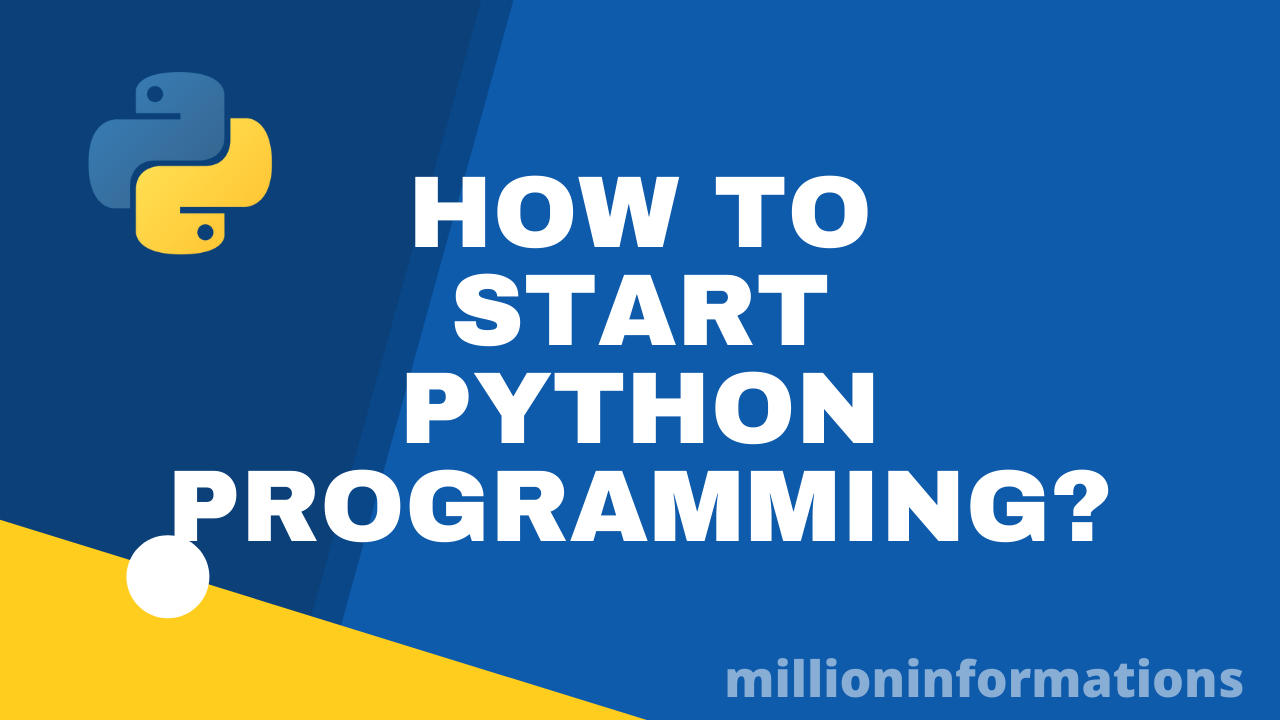Friday 3 March 2023
Chat GPT: The Future of Conversational AI
Chat GPT: The Future of Conversational AI
Introduction:
What is Chat GPT?
How Does Chat GPT Work?
Applications of Chat GPT:
Conclusion:
The Role of Artificial Intelligence in Data Science: A Comprehensive Guide
The Role of Artificial Intelligence in Data Science: A Comprehensive Guide
Introduction:
What is Artificial Intelligence?
The Role of Artificial Intelligence in Data Science:
Applications of Artificial Intelligence in Data Science:
Conclusion:
An Introduction to Deep Learning
An Introduction to Deep Learning
Introduction:
What is Deep Learning?
How Does Deep Learning Work?
Applications of Deep Learning:
Conclusion:
A Beginner's Guide to Machine Learning: What It Is and How It Works
A Beginner's Guide to Machine Learning
Introduction:
Machine Learning is a buzzword that has been making rounds in the tech industry for a while now. It is a field of study that uses algorithms and statistical models to enable machines to learn from data without being explicitly programmed. In this beginner's guide, we'll discuss what Machine Learning is, how it works, and some of its applications.
What is Machine Learning?
Machine Learning is a subset of Artificial Intelligence that involves teaching machines to learn from data without being explicitly programmed. In other words, it is the process of enabling machines to learn by themselves. Machine Learning algorithms use statistical models to identify patterns in data and make predictions based on those patterns.
How Does Machine Learning Work?
There are three main types of Machine Learning algorithms: Supervised Learning, Unsupervised Learning, and Reinforcement Learning.
Supervised Learning: In Supervised Learning, the algorithm is trained on labeled data, which means that the input data and the corresponding output data are provided to the algorithm. The algorithm learns to map the input data to the output data, and it can then make predictions on new, unlabeled data.
Unsupervised Learning: In Unsupervised Learning, the algorithm is trained on unlabeled data, which means that only the input data is provided to the algorithm. The algorithm learns to identify patterns in the data and group similar data points together.
Reinforcement Learning: In Reinforcement Learning, the algorithm learns by interacting with its environment. It receives feedback in the form of rewards or punishments based on its actions, and it learns to take actions that maximize its reward.
Applications of Machine Learning:
Machine Learning has a wide range of applications in various industries, including healthcare, finance, retail, and more. Some common applications of Machine Learning include:
Predictive Modeling: Machine Learning algorithms can be used to build predictive models that can make accurate predictions about future events.
Natural Language Processing: Machine Learning algorithms can be used to analyze and understand human language, which can be useful in applications such as chatbots, voice assistants, and more.
Image and Video Recognition: Machine Learning algorithms can be used to recognize objects, faces, and other visual elements in images and videos.
Conclusion:
Machine Learning is a fascinating field that has the potential to revolutionize various industries. By enabling machines to learn from data, we can make better predictions, automate tedious tasks, and gain insights that were previously hidden. If you're interested in Machine Learning, there are plenty of resources available to get started.
What are the basics of Data Science?
Statistics: Data Science relies heavily on statistics, which is the branch of mathematics that deals with the collection, analysis, interpretation, presentation, and organization of data.
Programming: Data Scientists use programming languages like Python and R to manipulate, clean, and analyze large datasets.
Machine Learning: Machine learning is a subset of artificial intelligence that involves teaching computers to learn from data without being explicitly programmed. It is used to build predictive models, identify patterns, and make data-driven decisions.
Data Visualization: Data Scientists use data visualization tools to represent complex data in a way that is easy to understand and interpret. This includes creating charts, graphs, and interactive dashboards.
Data Cleaning: Data Cleaning involves removing or correcting inaccurate, incomplete, or irrelevant data to ensure that the analysis is based on accurate and reliable data.
Data Integration: Data Integration is the process of combining data from multiple sources to create a unified view of the data. This is often necessary because data is often scattered across multiple databases or file formats.
Data Exploration: Data Exploration involves analyzing the data to identify patterns, relationships, and insights that can be used to inform decision-making.
How to get a job in Data Science domain?
Here are some steps you can take to get a job in the Data Science domain:
Learn the basics: Start by learning the basics of Data Science, including statistics, machine learning, data visualization, and programming languages like Python and R.
Get a relevant degree or certification: Consider getting a degree in Data Science or a related field, or earning a certification in Data Science or a specific skill, like machine learning or data visualization.
Build a portfolio: Create projects that showcase your Data Science skills, such as data analysis, modeling, and visualization. These can be personal projects or projects completed through courses or bootcamps.
Gain practical experience: Look for internships or entry-level positions in Data Science to gain hands-on experience and learn from experienced professionals.
Network: Attend industry events, join online communities, and connect with professionals in the Data Science field to build your network and learn about job opportunities.
Apply for jobs: Look for job postings for Data Scientists and related positions, and tailor your resume and cover letter to highlight your relevant skills and experience.
Prepare for interviews: Practice answering common Data Science interview questions and be prepared to discuss your projects and experience.
Remember that the Data Science field is constantly evolving, so it's important to stay up-to-date with the latest technologies and trends. Continuing education through courses, conferences, and online resources can help you stay competitive and advance your career in Data Science.
How to create a Youtube channel and earn money from it?
Sign up for a YouTube account: Go to youtube.com and click the "Sign in" button at the top right corner of the page. Follow the prompts to create your account.
Create your channel: Click on your profile picture in the top right corner of the page and select "Your channel" from the drop-down menu. Follow the prompts to set up your channel, including adding a profile picture and cover photo.
Create and upload content: Create high-quality videos that appeal to your target audience and upload them to your channel. Make sure to optimize your video titles, descriptions, and tags for search engine optimization.
Meet YouTube Partner Program requirements: To monetize your channel, you need to meet YouTube's Partner Program requirements, which include having at least 1,000 subscribers and 4,000 watch hours in the last 12 months.
Enable monetization: Once you meet the Partner Program requirements, go to your YouTube Studio dashboard and click on the "Monetization" tab. Follow the prompts to enable monetization and set up your AdSense account.
Earn money: You can earn money through various monetization methods, including ads, channel memberships, merchandise sales, and Super Chat and Super Stickers during live streams.
Remember that creating a successful YouTube channel takes time and effort. Consistency and quality content are key to growing your audience and earning money from your channel.
How to earn online in India in 2023?
How to earn online in India in 2023?
Top 10 platforms to earn online
Top 10 platforms to earn online
How to earn Online?
There are several ways to earn money online, depending on your skills and interests. Here are some popular options:
Freelancing: If you have skills such as writing, graphic design, web development, or social media management, you can offer your services on freelance platforms like Upwork, Fiverr, and Freelancer.
Online surveys: There are several websites that pay you for completing surveys and giving feedback, such as Swagbucks, Survey Junkie, and Toluna.
Selling products online: You can set up an online store on platforms like Amazon, eBay, or Etsy and sell products such as handmade items, digital products, or drop-shipped products.
Affiliate marketing: You can earn a commission by promoting products or services through affiliate marketing programs like Amazon Associates, ClickBank, or ShareASale.
Online tutoring: If you have expertise in a subject, you can offer online tutoring services through platforms like Chegg, TutorMe, or Skooli.
Stock trading and investing: You can invest in stocks, cryptocurrencies, or other financial instruments through online trading platforms like Robinhood, E*TRADE, or Coinbase.
Online content creation: You can monetize your content by creating videos on YouTube, blogging, or podcasting, and earning revenue through advertising, sponsorships, or affiliate marketing.
It's important to remember that earning money online requires hard work and dedication, and success is not guaranteed. However, with the right skills and mindset, it is possible to earn a decent income online.
.png)
.png)
.png)
.png)
.png)




